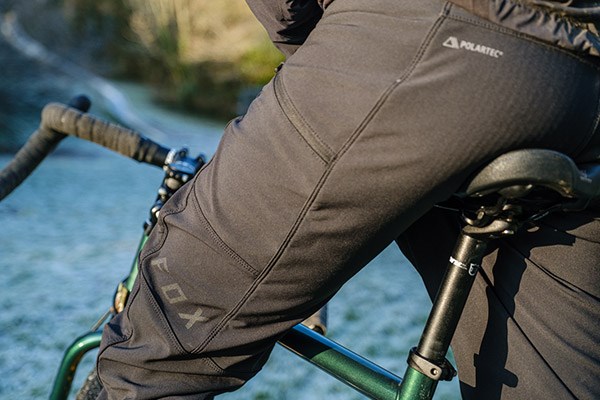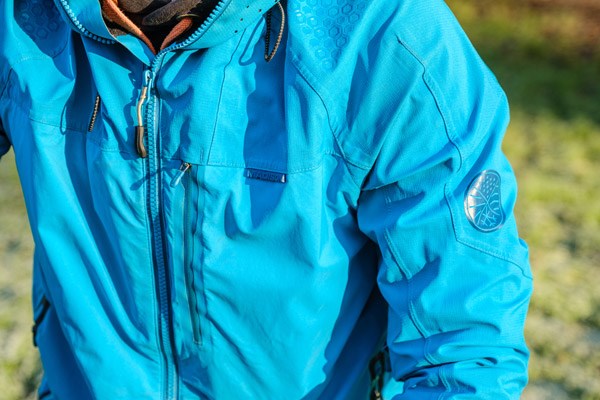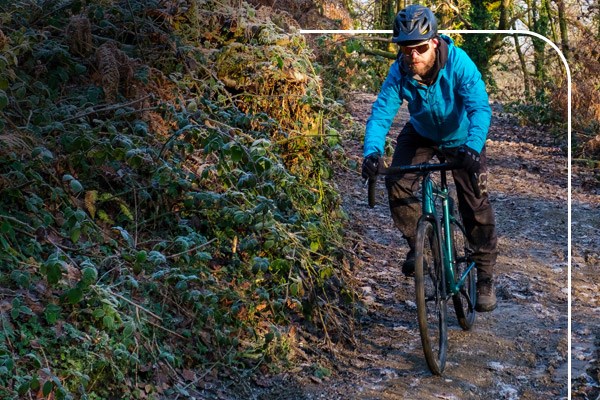Riding your Gravel or Mountain bike during the winter will make you stronger and fitter on the bike as riding through the mud, snow and ice makes you work harder. Winter riding also helps you improve your balance and agility, as the bike is always moving under you. This all adds up to you having more fun in the springtime. Riding outdoors during the cold winter months can be hard work. But lots of us don’t have the space for a turbo trainer and training indoors is not for everyone. So, the only way many can keep riding is by sticking to the trails.
What you wear can make getting out and about during the winter a lot comfier, more appealing, and overall, more fun. The best way to keep warm during the winter is to wear layers, this allows you to control your temperature easier. Quick-wicking materials also improve comfort, moving liquid away from the skin to stop you from catching a chill.
When it comes to clothing, there is a lot of cross-over from MTB and Gravel bike. When choosing what to wear, it’s always better to start your ride off feeling a bit colder, once you start moving your temp will rise to a comfortable point.
Base Layer
The base layer is the most important part, it contacts your skin so this can make a difference in keeping warm. Merino wool is a great option for winter riding, it’s a natural fibre that has thermal and wicking properties. However modern synthetic materials have come a long way, they are able to keep you warm, with wicking properties all while remaining thin and light. Sweating is not a good thing during the winter, as moisture on your skin will make you cold, so a wicking material is very important.

Base Layer Recommendations
Trousers
When it comes to trousers you want something that is going to keep you warm and dry but needs to be breathable. Gravel and MTB tend to wear loser-fitting trousers as they give you a greater range of movement and feature waterproof panels in the back to protect against spray off the rear wheel. Synthetic material trousers tend to be the best option, ones that have thermal lining and waterproofing will make you far comfier on your ride.

Trousers Recommendations
Jersey
On top of the base layer, it’s good to put another layer or two on. Jerseys tend to be the go-to option, as they are a bit looser which means they trap air that helps keep you warm.
A looser fit also helps with airflow and allows you a greater range of movement. It’s a better idea to wear two thinner jerseys, rather than one thick one. This gives you the option of removing a layer and helps control your body temperature.

Jersey Recommendations
Jacket
A cycling-specific jacket is a must-have, especially in winter. You will need to look for one that is fully waterproof, but still breathable. A jacket with zipped ventilation means you can open them up instead of unzipping the jacket, this helps give you a little air without letting all the heat out and cold air in. Cheap jackets tend to be waterproof, but once you start to heat up the first thing you want to do, is take it off because they are like wearing a plastic bag. Gilets are also a good option to wear underneath your jacket, they will help keep your core warm.

Jacket Recommendations
Socks, Gloves and Headwear
Having the right socks, gloves and headwear is a vital part of keeping warm during the winter. Merino wool socks are great, they keep your feet nice and warm, whether wet or dry. There are also synthetic waterproof socks, these will keep your feet bone dry, even if you decide to splash through a deep puddle, but they aren’t always designed to keep your feet warm.
Gloves are a very personal thing; some riders find thick warm gloves comfortable to ride and some prefer to bear the cold and not wear any. If you do go for gloves, windproof is always a great option, this stops the wind from getting through which is the main reason you get cold hands. Waterproof gloves will keep your hands dry, as wet on your skin always makes you cold.

When it comes to headwear, you will want something thermal but thin as it will need to sit under your helmet. Neck tubes are great as they can be worn halfway up your face or pulled to wrap most of your head and as they are skin-tight, they help keep heat in.
Gloves Recommendations
Shoes
Winter-specific shoes are a good idea, they tend to have high gaiters that help keep water out. The downside to waterproof shoes is that if water gets in, it will stay in.
If you decide that waterproof shoes aren’t needed, slimmer shoes with less padding are a good idea, these will retain less moisture giving your socks a better chance at keeping your feet warm.

Shoe Recommendations
Bike Maintenance
The winter is very hard on bikes, the mud and grit can be like sandpaper on components. So, it’s more important to ensure you clean and maintain your bike to extend its life. A bike-specific cleaning kit will help, no one wants to be standing in the cold cleaning the bike so having a kit means everything you need is in one place. During the winter it’s better to stick with a wet oil for your chain, this will reduce the chance of the oil getting washed off during a ride.
Mudguards are almost a must in the UK, these will help protect parts of your bike from getting coated in mud, but also helps keep mud and water off you which results in keeping you warmer for longer.
The most important thing about riding during the winter is having fun.
















